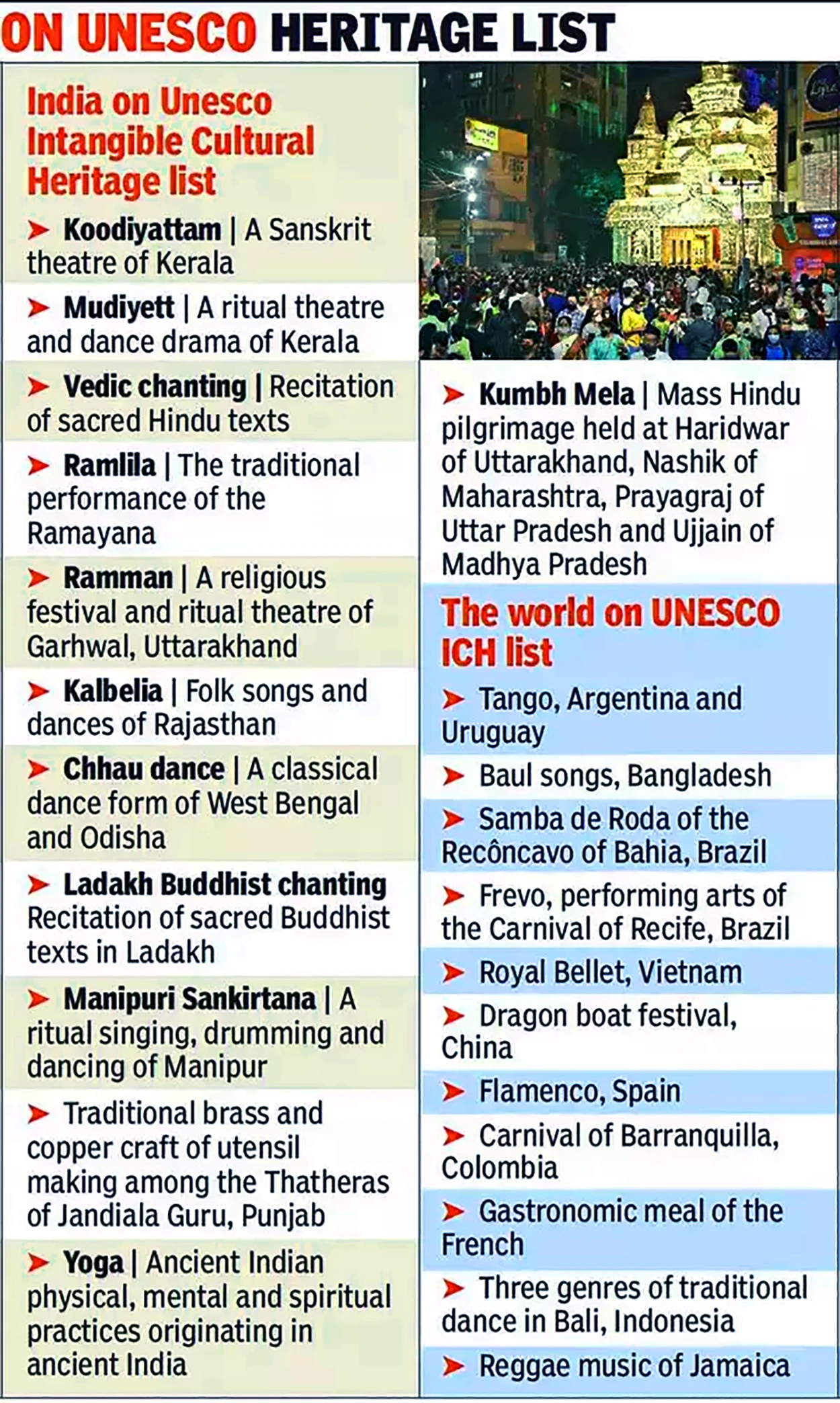Context: Garba has been declared as an Intangible Heritage by the United Nations Educational, Scientific and Cultural Organisation (UNESCO).
Garba of Gujarat has been declared an Intangible Heritage by UNESCO
- The decision was reached at the 18th session of the Intergovernmental Committee for the Safeguarding of the Intangible Cultural Heritage held at the Cresta Mowana Resort in Kasane, Botswana.
- According to UNESCO’s citation, Garba is not merely a dance but a cultural legacy which has continued through generations in both urban and rural settings.
- Other recent additions include;
- the rickshaws and rickshaw painting in Dhaka, Bangladesh, Indonesia’s Jamu wellness culture, and Thailand’s Songkran festival.

About Garba Dance:
- Garba is a “ritualistic and devotional dance” that is performed on the occasion of the festival of Navratri.
- The dance takes place around a perforated earthenware pot lit with an oil lamp or an image of the mother goddess Amba.
- The dancers wearing colorful dresses move around the center in a counterclockwise circle.
- The dance begins with slow circular movements to let the tempo slowly build up to a frenzied whirling.
Significance of Garba:
- Inclusive Participation: The practitioners and bearers of Garba are broad and inclusive, from the dancers to the musicians, social groups, craftspeople, and religious figures involved in the festivities and preparations
- Social Equality Through Garba: Garba fosters social equality by diluting socio-economic, gender and religious structures. It continues to be inclusive of diverse and marginalized communities, thus strengthening social bonds
Intergovernmental Committee of the 2003 Convention:
- The Intergovernmental Committee of the 2003 Convention was adopted by the United Nations Educational, Scientific and Cultural Organization (UNESCO) in 2003 and entered into force in 2006.
- It consists of 24 members and is elected in the General Assembly of the Convention according to the principles of equitable geographical representation and rotation.
- State members of the Committee are elected for a term of four years.
- India ratified the 2003 Convention for the Safeguarding of the Intangible Cultural Heritage in September 2005.
- India has been elected to the Intergovernmental Committee of UNESCO’s 2003 Convention for the Safeguarding of the Intangible Cultural Heritage (ICH) for the 2022-2026 cycle.
|
What is Intangible Cultural Heritage?
- Intangible cultural heritage is the practices, expressions, knowledge, and skills that communities, groups, and sometimes individuals recognise as part of their cultural heritage.
- Broad Classification of intangible cultural heritage:
- Oral traditions and expressionsPerforming arts Social practices, rituals and festive events Knowledge and practices concerning nature and the universe
- Traditional craftsmanship
- Criteria for an intangible cultural heritage:
- The entity must be:
- recognized by communities, groups and, in some cases, individuals as part of their cultural heritage;
- transmitted from generation to generation;.
- provide a sense of identity and continuity, thus promoting respect for cultural diversity and human creativity.

- Sangeet Natak Akademi is the nodal organization that files nominations of intangible cultural entities from India, for UNESCO
UNESCO World Heritage Sites in India here.
What are the Government Initiatives to Promote Intangible Cultural Heritage in India?
- Scheme for Safeguarding the Intangible Cultural Heritage and Diverse Cultural Traditions of India:
- It aims to professionally enhance awareness and interest in the safeguarding, promotion, and propagation of Intangible Cultural Heritage.
News Source: Hindustan Times
![]() 7 Dec 2023
7 Dec 2023


